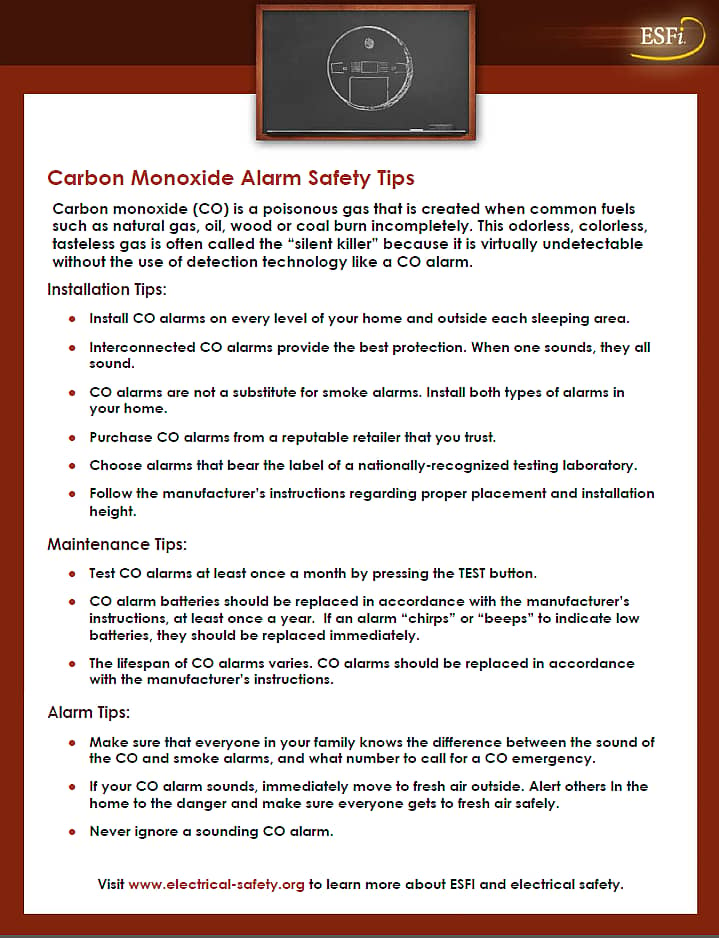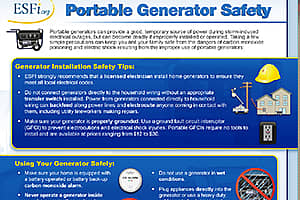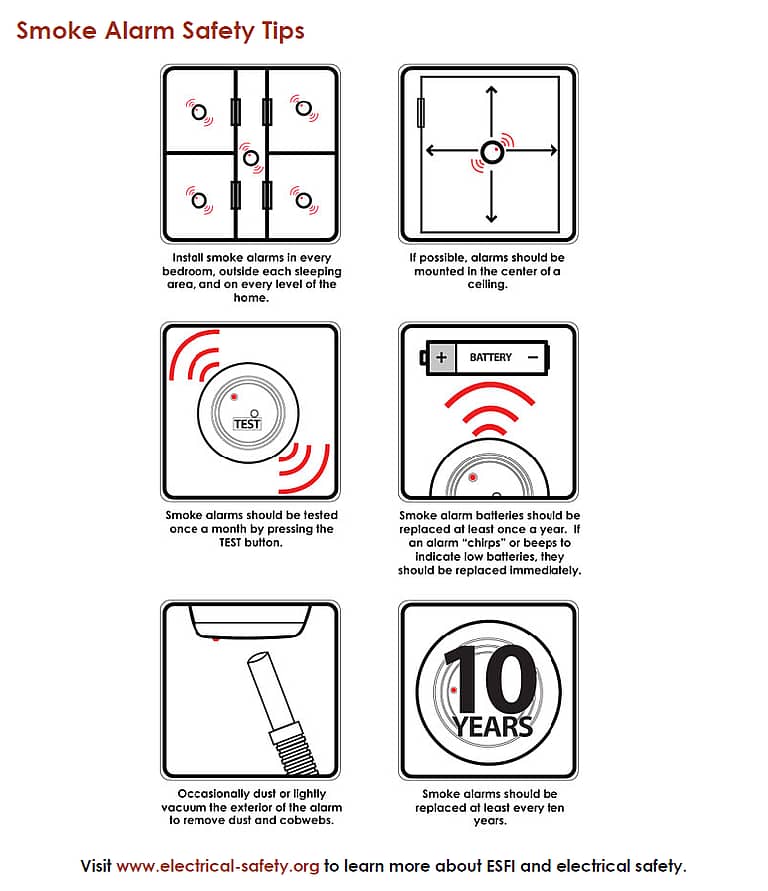Carbon monoxide (CO) is a poisonous gas that is created when common fuels such as natural gas, oil, wood or coal burn incompletely. This odorless, colorless, tasteless gas is often called the “silent killer” because it is virtually undetectable without the use of detection technology like a CO alarm.
Installation Tips
- Install CO alarms on every level of your home and outside each sleeping area.
- Interconnected CO alarms provide the best protection. When one sounds, they all sound.
- CO alarms are not a substitute for smoke alarms. Install both types of alarms in your home.
- Purchase CO alarms from a reputable retailer that you trust.
- Choose alarms that bear the label of a nationally-recognized testing laboratory.
- Follow the manufacturer’s instructions regarding proper placement and installation height.
Maintenance Tips
- Test CO alarms at least once a month by pressing the TEST button.
- CO alarm batteries should be replaced in accordance with the manufacturer’s instructions, at least once a year. If an alarm “chirps” or “beeps” to indicate low batteries, they should be replaced immediately.
- The lifespan of CO alarms varies. CO alarms should be replaced in accordance with the manufacturer’s instructions.
Alarm Tips
- Make sure that everyone in your family knows the difference between the sound of the CO and smoke alarms, and what number to call for a CO emergency.
- If your CO alarm sounds, immediately move to fresh air outside. Alert others In the home to the danger and make sure everyone gets to fresh air safely.
- Never ignore a sounding CO alarm.







